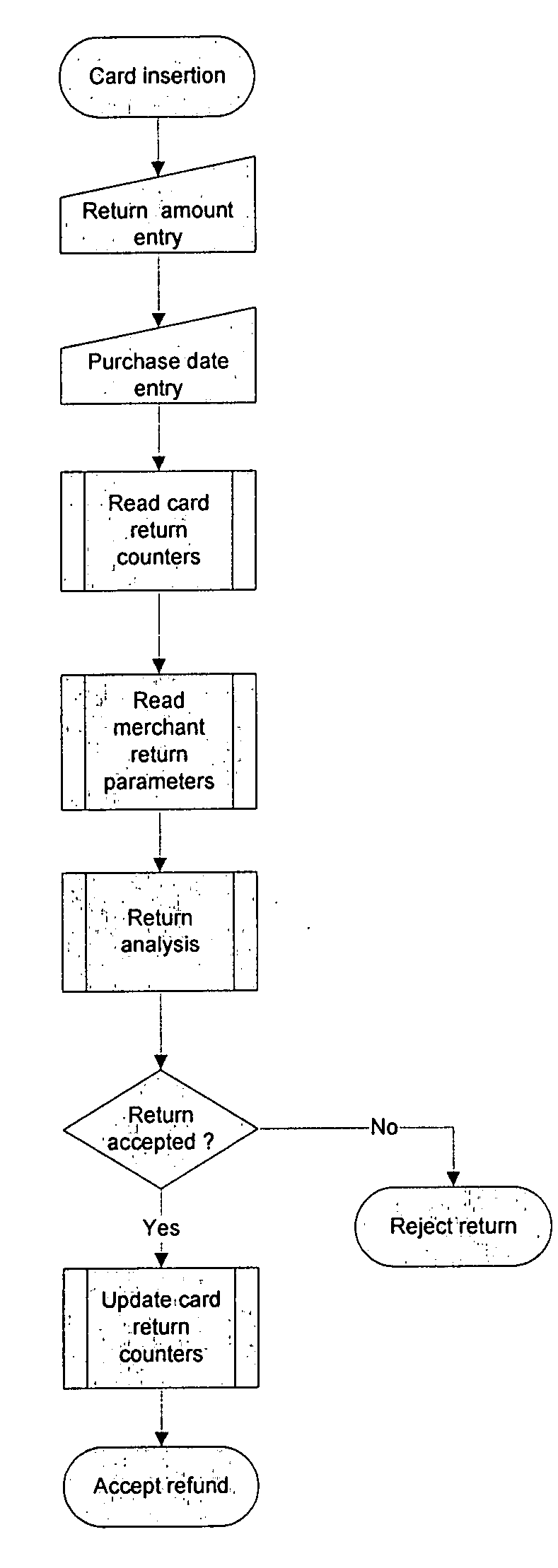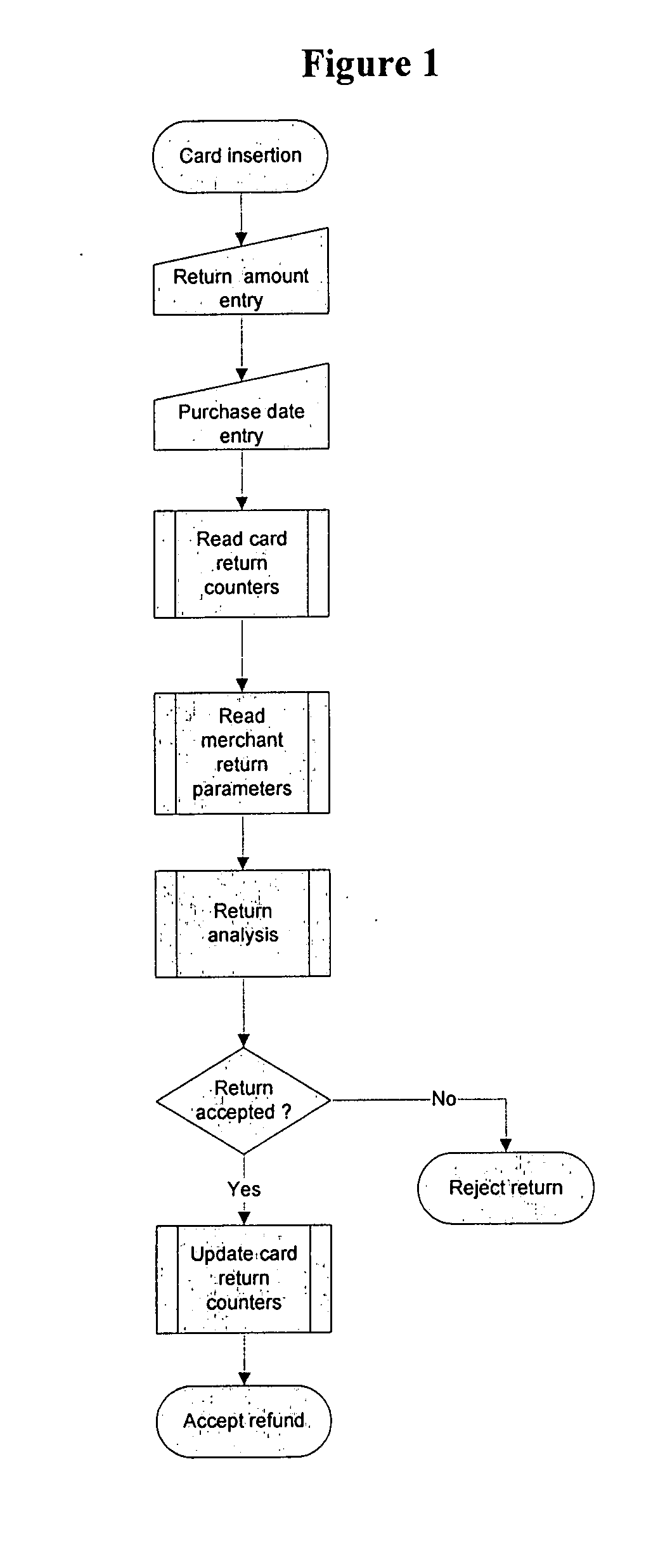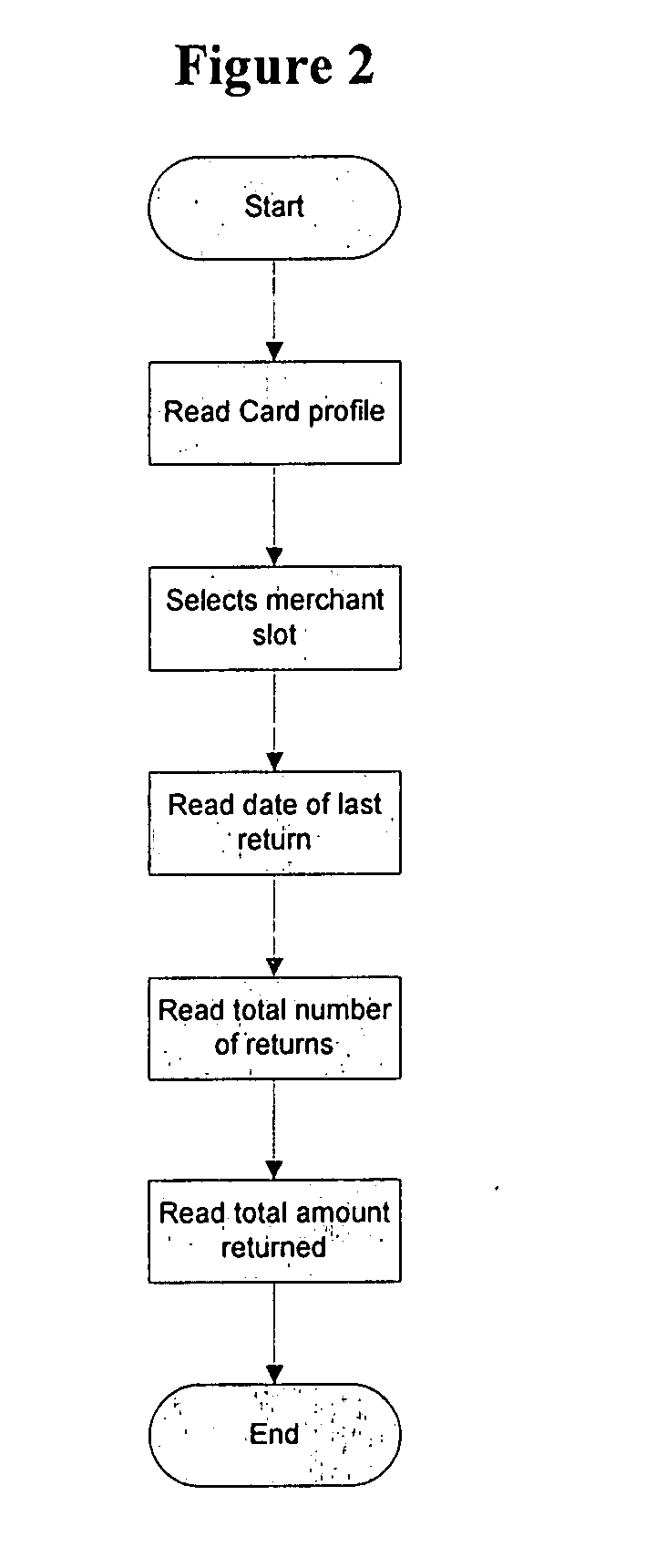Method and system for authorising returns
a technology of return authorization and method, applied in the field of method and system for authorising returns, can solve the problems of increasing the complexity of the operation of such a database, the risk of penalizing the estimated 98% of customers who return merchandise, and the potential loss of privacy for merchants, so as to achieve a new approach to managing risk and eliminate returns fraud and abus
- Summary
- Abstract
- Description
- Claims
- Application Information
AI Technical Summary
Benefits of technology
Problems solved by technology
Method used
Image
Examples
example 1
Return Accepted
Context:
[0092]Last return Date: 12 Oct. 2005[0093]Number of accepted returns: 1 / Cumulative value of accepted returns: $159
Return Details:
[0094]Original Purchase Date: 20 Jul. 2005[0095]Return Amount: $56[0096]Return date: 20 Oct. 2005
Result: Return Accepted
[0097]Last return more than 5 days ago[0098]Purchase done less than 90 days ago[0099]2nd return in October month[0100]New cumulative amount for October month=$215 (less than $250)
[0101]In this example, the POS terminal returned a recommendation that the refund be paid based on the compliance of the return details with the rules of the merchant return policy.
example 2
Too Many Returns and Too Late
Context:
[0102]Last return Date: 12 Oct. 2005[0103]Number of accepted returns: 2 / Cumulative value of accepted returns: $159
Return Details:
[0104]Original Purchase Date: 10 Jul. 2005[0105]Return Amount: $10[0106]Return date: 19 Oct. 2005
Result: Rejected
[0107]2 returns max. allowed per month[0108]Return after allowed return period
[0109]In this example, the POS terminal recommended that the refund be refused because the number of purchase returns would exceed the number allowed per month by the merchant return policy. Also the refund would be refused because the purchase return date exceeds the maximum number of days allowed for the return.
example 3
Too Many Returns and Too Late
Context:
[0110]Last return Date: 12 Oct. 2005[0111]Number of accepted returns: I / Cumulative value of accepted returns: $159
Return Details:
[0112]Original Purchase Date: 10 Jul. 2005[0113]Return Amount: $100[0114]Return date: 19 Oct. 2005
Result:
[0115]Return rejected: $250 max. allowed per month[0116]Return after allowed return period
[0117]In this example, the POS terminal recommended that the refund be refused because the value of the purchases returned within the return period would exceed the amount allowed by the merchant return policy. Also the refund would be refused because the purchase return date exceeds the maximum number of days allowed for the return.
PUM
 Login to View More
Login to View More Abstract
Description
Claims
Application Information
 Login to View More
Login to View More - R&D
- Intellectual Property
- Life Sciences
- Materials
- Tech Scout
- Unparalleled Data Quality
- Higher Quality Content
- 60% Fewer Hallucinations
Browse by: Latest US Patents, China's latest patents, Technical Efficacy Thesaurus, Application Domain, Technology Topic, Popular Technical Reports.
© 2025 PatSnap. All rights reserved.Legal|Privacy policy|Modern Slavery Act Transparency Statement|Sitemap|About US| Contact US: help@patsnap.com



